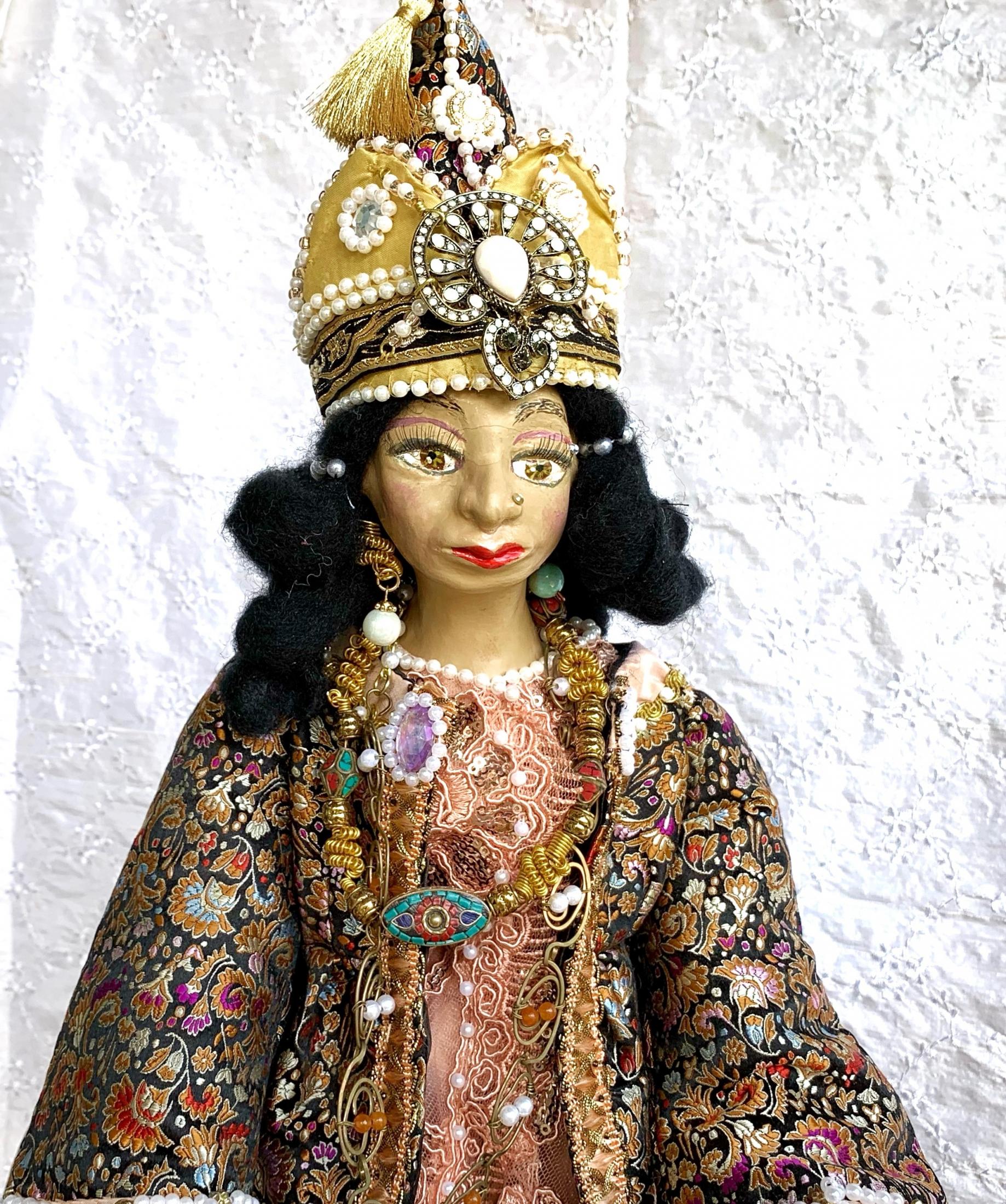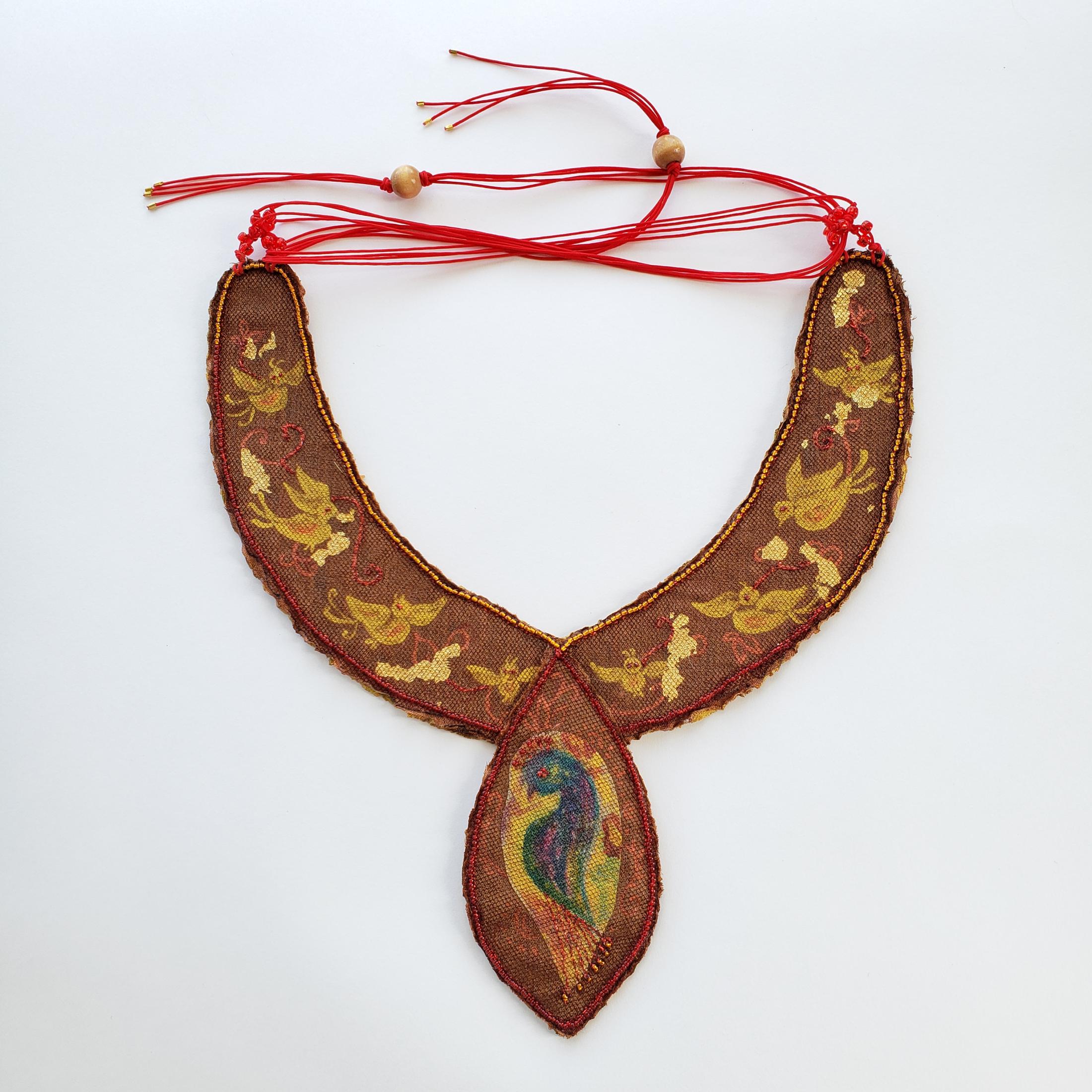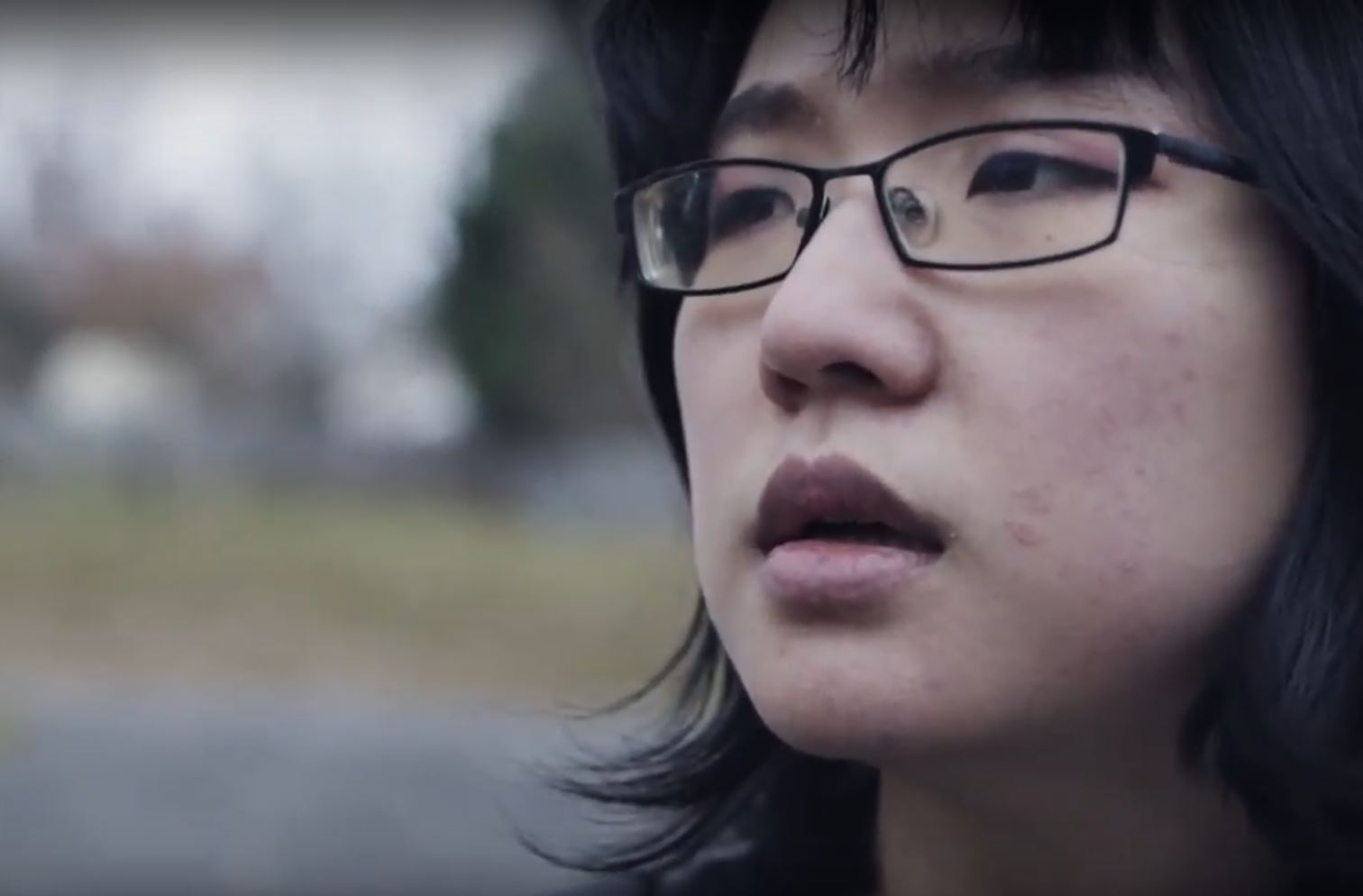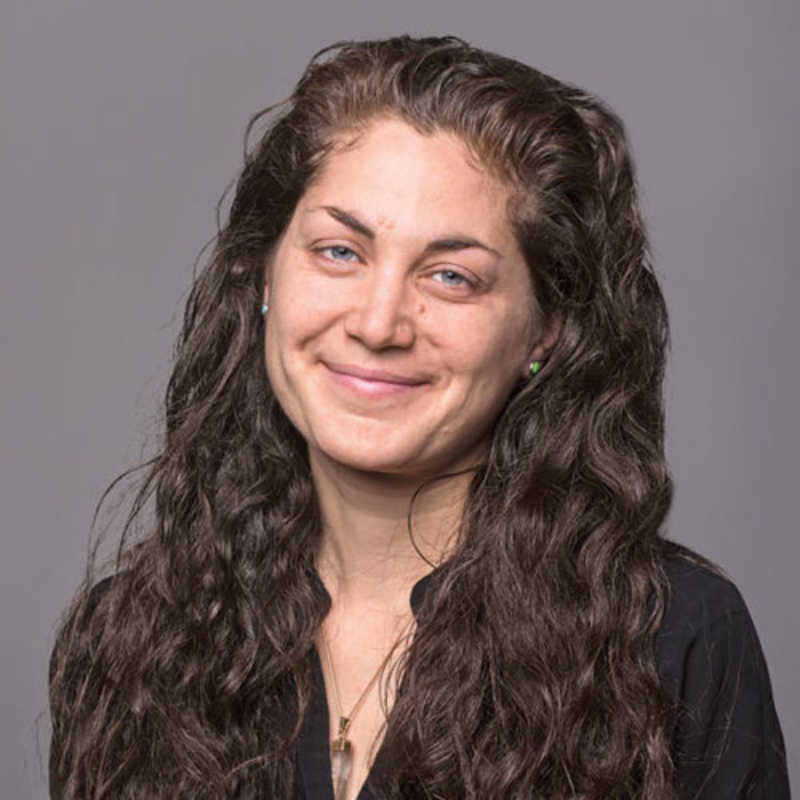
Anu Das’ series of necklaces—in silk, lace, and embroidered glass beads—address climate change and its effects on communities of people and wildlife. Molli Chang’s film short, Sweet Symphony, depicts a mother-daughter relationship—and the daughter’s (seemingly more loving) connection with her cello. A mixed-media collage by Marlo De Lara, with the accompanying ambient audio “Pandemic Scores,” elicits tense feelings experienced by those living through crises across the globe.
For 50 years, the Asian Arts & Culture Center (AA&CC), which operates as a nonprofit within Towson University’s Center for the Arts, has exhibited this type of impactful work by Asian artists as a catalyst to stimulate conversation and education about Asian culture.
Currently, paintings, drawings, screenprints, film, sculpture, and portrait dolls by two dozen regional Asian-American and Pacific-Islander artists are on view as part of the AA&CC’s third-annual Asia North Festival, which runs through May 15 and is a highlight of year-round programming celebrating the center’s 50th anniversary. The festival also features art, workshops, performances, cooking demonstrations, and talks at venues throughout the Station North Arts District.
“Art is accessible,” says AA&CC director Joanna Pecore, who started her role at the center in 2014 and has devoted her life to learning about different cultures through the arts. “You can connect to any art form without necessarily knowing a language. Everybody can have a response to it, and it has multiple access points. History and culture, personal and community experiences—they are all embedded in works of art.
“You see so many things like cultural competency training, which are good, but can only go so far,” she continues. “You’re just learning techniques and facts about different cultures. You’re not really connecting to anything. But with the arts, you are actually connecting and experiencing.”
As part of the AA&CC’s mission, staff encourages people on campus and in the community to engage with the art, music, film, and performances at the center in myriad ways. This can be by viewing and listening, but also participating in workshops to connect to the art and to one another. Pieces highlighted at the AA&CC ideally serve as a springboard for cross-cultural dialogue that extends beyond the campus and impacts the wider community.
“Asian art can typically be more focused on traditional arts and collecting antiquities,” says Asia North curator and AA&CC’s program manager Nerissa Paglinauan, “but Asian art is a living thing. It’s the work of these living artists and incorporates their immigrant experiences. A lot of them combine traditional art forms with contemporary practices.”


Under Pecore’s leadership, the AA&CC team and featured artists have worked to be more involved in the community throughout the years, rather than representing static art collections—as exquisite as the pieces may be.
“There is a civic act, a civic engagement, in the participation in art,” says Michele Alexander, marketing and public relations manager at Towson University. “It connects with your basic human needs and what all of us share. I think it’s a more impactful experience when it comes to learning something.”
The AA&CC team also aims to be as inclusive as possible and involve Baltimore as a whole—which is perhaps evident most dramatically in their Asia North Festival, but also noticeable in more subtle ways throughout the year. At a recent interactive installation at the AA&CC gallery, visitors were invited to add to a sand mandala design being created on the floor by pouring various dispensers of colored sand.
When a group of international students visited from South America, “They said, ‘This is exactly what we do at home,’” Paglinauan recalls. “They had no idea that they were connected to a South Asian art tradition. There are so many ways of making connections where you didn’t know there was one, and cultures that can seem really different do have these similarities.”
As part of AA&CC’s anniversary programming, Phaan Howng’s exhibit, “A Bag of Rocks for A Bag of Rice,” has been extended through May 15 at the AA&CC gallery on campus. It can be viewed online and by appointment beginning May 3. A case study of East Asian rock gardens, the exhibit explores the history of privilege, exploitation of labor and natural resources, and cultural appropriation behind the beautiful aesthetic of these Zen gardens.
All of the Asia North artwork can be viewed online in an extensive virtual exhibit, and the festival will also be featured as a component of a Station North walking tour on May 7.
Drawing attention to Asian culture and the AA&CC seems particularly relevant this year, in the midst of repeated hate-crimes across the country toward Asian-Americans.
“The point of all of this is to educate,” Pecore says. “The Asian-American experience has never been a priority in this country. We can’t do enough soon enough.”
